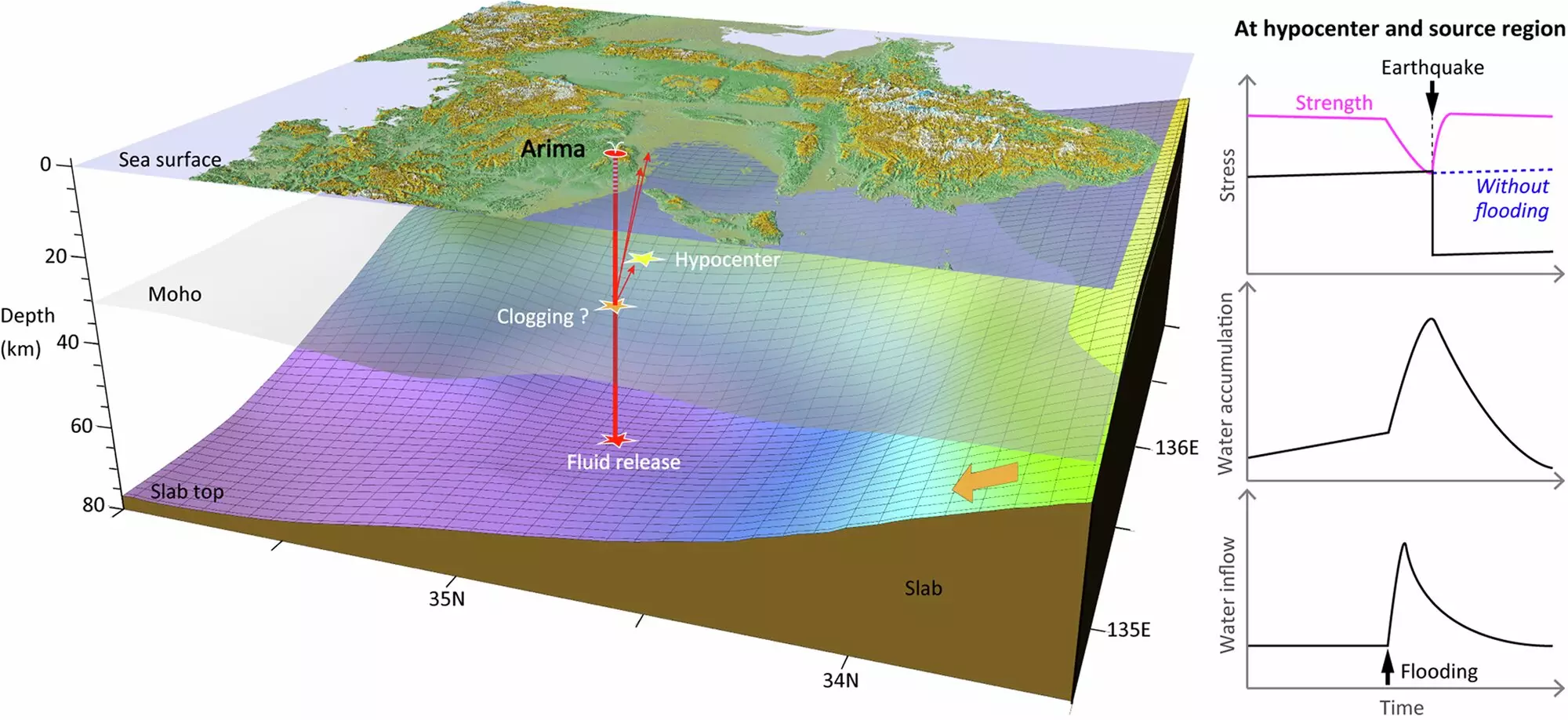In a recent study conducted by researchers at the University of Tsukuba, evidence has emerged suggesting a surprising link between the 1995 Kobe earthquake and the unique geological phenomena surrounding the renowned Arima Hot Springs in Japan. This discovery sheds light on the possible role of deep underground water movements as precursors to seismic activity, a concept that could transform how we understand and monitor earthquakes.
The research team undertook a meticulous analysis of the stable isotope ratios, specifically of hydrogen and oxygen, alongside the chloride ion concentrations in the hot spring water over multiple decades. This thorough investigation aimed to pinpoint the origins of the Arima hot spring water, connecting it to the subducting Philippine Sea Plate, which lies beneath the region. Traditionally, hot springs are associated with geothermal activity; however, the isotopic signatures revealed here point toward a more complex interaction between subsurface fluids and tectonic processes.
The Salinity Anomaly
One of the chief observations regarding the Arima Hot Springs is their remarkable salinity levels, which are notably over twice that of typical seawater. This feature not only supports the hypothesis of origins linked to the Philippine Sea Plate but also invites deeper questions about the hydrological dynamics at play. The salinity suggests significant geological interactions and potentially offers clues to the conditions present preceding the 1995 quake. Despite the isotopic evidence correlating plate-derived water with the hot springs, direct geological confirmation has proven elusive, leaving room for speculation and further research.
Research results published in *Communications Earth & Environment* revealed a striking pattern correlating increases in certain isotopic ratios with seismic events. Before the 1995 earthquake, researchers noted an uptick in the percentage of plate-derived water in three out of the seven springs studied. This escalation mirrored earlier observations regarding the accumulation of radon and chloride ion concentrations in groundwater, which have historically been associated with precursory signs of seismic activity. Most compellingly, estimates indicated that the volume of this geological fluid surge surpassed 100,000 cubic meters, presenting a theoretical scenario wherein excessive water drainage could weaken the fault lines, ultimately setting the stage for a major earthquake.
Interestingly, this phenomenon is not isolated to the Kobe region. The study draws parallels with the Matsushiro earthquake swarm that occurred between 1965 and 1967, where similar characteristics were observed regarding hot spring water sourced from the Philippine Sea Plate. Clearly, the implications of these findings reach beyond a singular event; they highlight the potential of monitoring hot spring water in various regions as a proactive approach to earthquake preparedness and prediction.
The investigation into the connection between hot springs and seismic activity opens novel avenues for future research. As the understanding of hydrological and geological interactions deepens, earthquake prediction methodologies may evolve significantly. The researchers’ insights illustrate how native geological features, such as hot springs, can serve as crucial indicators of broader tectonic movements, providing humanity with vital tools to further comprehend and mitigate the inherently unpredictable nature of earthquakes.



Leave a Reply